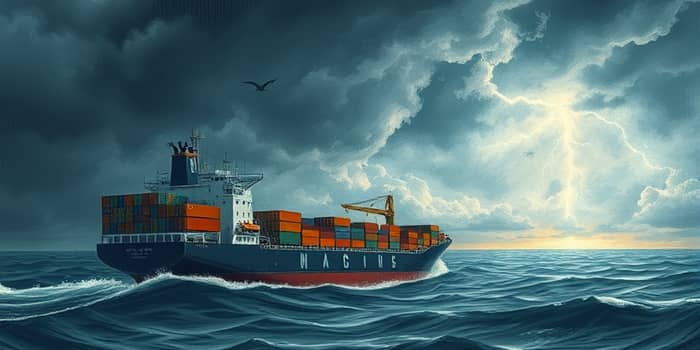
In 2025, global trade finds itself at a crossroads as unprecedented policy turbulence casts a long shadow over export forecasts. Businesses and governments alike are grappling with an environment where rules change overnight and strategic planning feels like aiming at a moving target.
The recent explosion of trade policy uncertainty has forced exporters to reevaluate assumptions, revise projections, and brace for volatility on a scale unseen in decades. This article explores the causes, impacts, and practical strategies to navigate these uncertain waters.
Indices of trade policy uncertainty have surged to 900 points in 2025, a tenfold jump over the 2015–2024 average. Driven by escalating tariffs, retaliatory measures, and geopolitical tensions, markets now face historic highs in uncertainty.
Economic policy uncertainty also broke records in early 2025, surpassing peaks during both the 2008 financial crisis and the COVID-19 pandemic. This regime instability leaves exporters hesitant to commit to new deals or expand production.
“Every uptick in tariffs and policy zigzag sets off a fresh round of market panic and logistical headaches for exporters,” analysts warn, highlighting how fragile the global supply chain has become under constant threat of disruption.
In a dramatic policy shift, the United States imposed sweeping “reciprocal” tariffs of at least 10% on nearly all trading partners in early 2025. Certain levies peaked at 145% on imports from China and 125% on U.S. goods entering China, igniting fierce cycles of retaliation.
These measures have been subject to frequent revisions—sometimes scaled back, then reinstated—creating a haze of confusion around implementation timelines and long-term impact. Exporters face the neck-breaking pace of tariff hikes, unsure whether today's tariff will stand tomorrow.
The World Trade Organization’s 2025 Global Trade Outlook has been revised downward, forecasting a nearly 3% drop in trade volumes compared to baseline projections. Global GDP growth estimates have been slashed from 2.8% to 2.2%, with some analysis suggesting even steeper losses.
Under a scenario where reciprocal tariffs remain in force, GDP growth could fall by 0.6 percentage points, and when uncertainty effects are factored in, the downturn deepens to a 1.3-point reduction. The regional impacts are stark:
Merchandise exports are already feeling the strain: the Shanghai Containerized Freight Index plunged 40% from January to March 2025, erasing post-pandemic gains and returning to pre-2020 levels.
Reflecting these trade policy shocks, the volatility index surged to 52 points in April 2025—more than triple its 2023–2024 average. Safe-haven assets soared, with gold reaching USD 3,200 per troy ounce, compared to the 2010–2020 average of USD 1,400.
Meanwhile, bond yields and financing costs have climbed, driven by rising term premiums. Higher borrowing expenses threaten to squeeze governments and corporations, especially in emerging markets that rely heavily on external financing.
Manufacturers and investors are delaying decisions, re-evaluating supply chains, and stepping up risk management efforts. Historically, a 10-percentage-point tariff hike translates to a 1.1% GDP reduction over five years, underlining the long-tail damage of persistent protectionism.
Amid this turmoil, people feel the impact in job security, price hikes, and diminished growth prospects. Export-dependent communities, especially those involved in manufacturing, technology, and commodities, are often the hardest hit.
These challenges weigh heaviest on small and trade-dependent economies that lack the financial buffers and policy flexibility of larger nations. Uncertainty drains resilience and erodes confidence, making it difficult to plan expansions or diversify markets.
While the outlook appears daunting, exporters can take proactive steps to protect operations and foster growth. By adopting rigorous planning and flexible practices, businesses can turn uncertainty into an opportunity for competitive advantage.
Senior executives emphasize the need for delayed investment and capital allocation only when downside risks are fully understood—favoring modular expansions and flexible contracts.
Exporters can also benefit from building strategic partnerships with logistics and financing providers adept at operating in high-volatility settings, ensuring smoother flows of goods and capital.
The convergence of tariff escalations, retaliatory cycles, and legal upheavals has created an environment where traditional forecasting tools struggle to keep pace. Without a renewed commitment to cooperative, transparent policymaking, volatility and lowered export growth may become the new normal.
Yet, amid these challenges lies an opportunity. Companies that embrace robust risk management, diversify intelligently, and champion clear, consistent rules can not only survive but build more resilient, adaptable businesses. Today’s storm, daunting as it may seem, can also be the crucible in which tomorrow’s trade leaders are forged.
References













